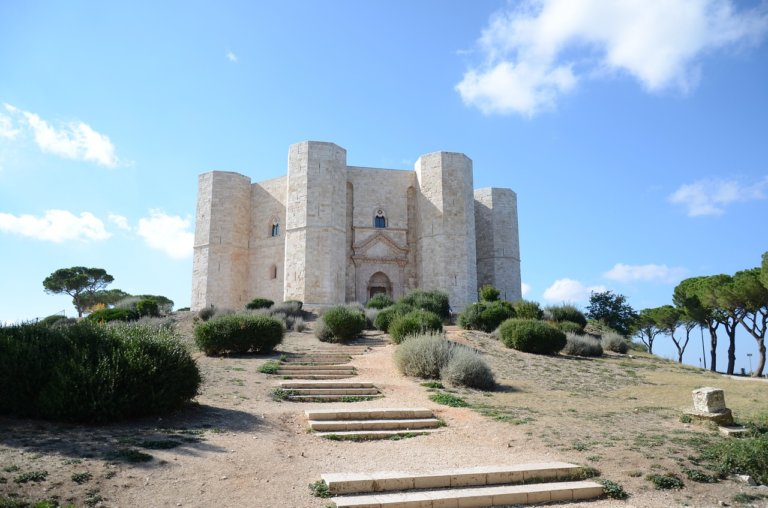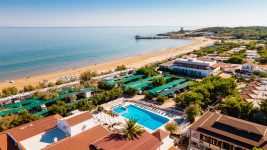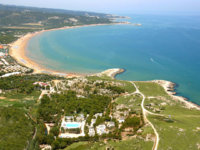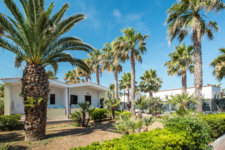Among the most evocative places to visit in Puglia there is certainly Castel del Monte, which overlooks from the top of a hill 20km from Andria, the fields of Alta Murgia National Park.
Built by Frederick II of Swabia in the thirteenth century and famous throughout the world for its characteristic octagonal plan, Castel del Monte has been part of the list of World Heritage monuments since 1996 Unesco and is currently the most visited monument in the Puglia.
To learn about the history, curiosities and information that will allow you to better appreciate Castel del Monte we advise you to make one guided tour.
The origin of Castel del Monte is traced back to 1240, when, according to some documents, Federico II ordered the construction of what will become the most famous castle among many castles get built in Puglia from the "Puer Apuliae“, like those of Trani, Barletta and the castle of Vieste.
Castel del Monte turns out to be a grandiose architectural work, a synthesis of refined engineering, mathematical, geometric and astronomical knowledge.
The main building has octagonal plant, on each of the eight edges they engage eight towers of the same shape. Inside we find a suggestive courtyard, also with an octagonal plan. The materials used for the construction alternate in a skilful play of colours: white limestone, reddish coral breccia and marbles of different colours.

The interior features sixteen salt, eight for each floor, trapezoidal in shape, covered with a brilliant solution by barrel vaults (the lateral segments) and cross vaults (the central square parts). The keystones are decorated with allegorical anthropomorphic, zoomorphic and phytomorphic elements. The skilful use of classical, Gothic and Arab architectural elements make it one of the most interesting buildings of its period.

For centuries scholars have wondered about the purpose of this unique construction: the absence of a moat, machicolations and a drawbridge have in fact ruled out a military function of the Castle.
One of the most quoted hypotheses credits it as a hunting lodge, others, due to the strong symbolism with which it is imbued and with the peculiarities of Frederick II, see the Castel del Monte complex as a sort of "temple" in which to dedicate study of sciences and arts, in a regenerating place for body and spirit.
In fact, the Emperor's interest in knowledge, science and literature is known, which consecrated him to history as a mythical character, the "Stupor Mundi” in contradiction to its dark times.


 Turismovieste.it is created by
Turismovieste.it is created by 

















